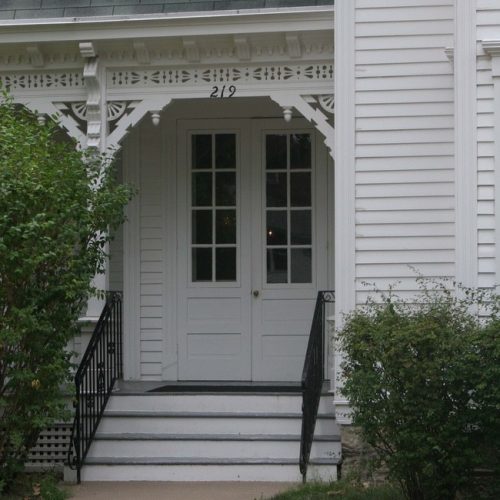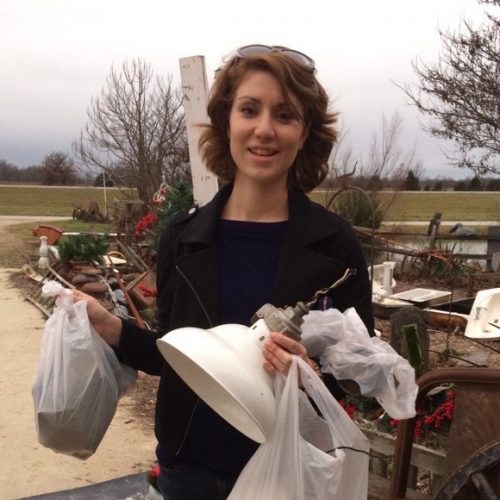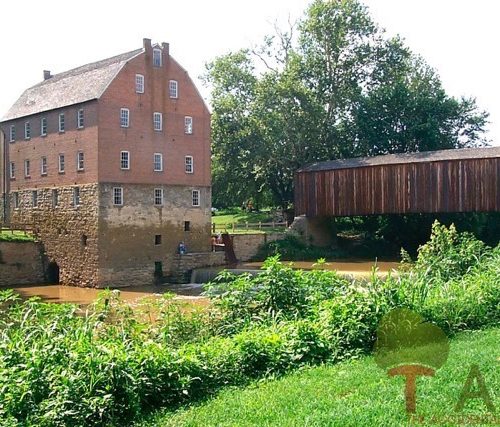Not a breath of fresh air moved on that day. In sweltering heat, we spent more than hour wandering around Jolly Mill Park, located in Pierce City, Missouri. The park has been developed around the mill, a unique way of honoring a past culture and presence that had been pivotal at one time for the success of this area. I barely noticed the heat and humidity because this is a place I have wanted to see for a long time. If you know me, you’ll know that I go a-gaga over old mills and springs. This one did not disappoint.
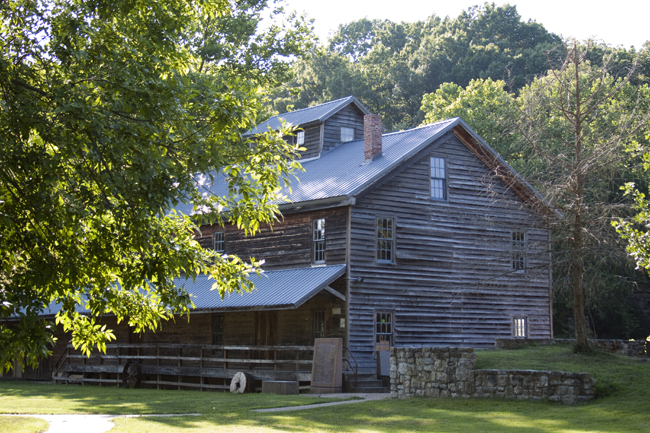
The History of Jolly Mill
Slaves built the mill in 1837 for Thomas Isbell and his son, John. Originally, the family named it the Isbell Mill. Sitting on Capps Creek, not only did the mill grind grain with its fancy French buhrstones, it also distilled whiskey. In fact, it began as a distillery. The structure – 3-stories of pit-sawed boards attached to hand-hewn logs and held together with handmade wooden pegs – appears to have withstood the test of time (thanks to the efforts of concerned local citizens). The huge mill stands on a foundation made of hand cut limestone slabs, sans mortar, that according to George G. Suggs, Jr., in “Water Mills of the Missouri Ozarks,” came from a quarry nearby in Barry County. The mill is located in Newton Country.
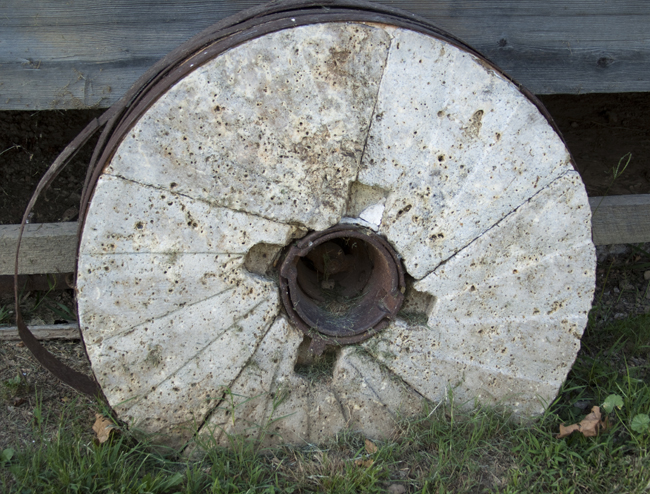
The mill, as mills did back then, served as a social gathering place for people who brought their wheat and corn to be ground. It also catered to the stagecoach and wagon train crowds. Isbell decided he didn’t want to pay taxes on whiskey sometime in the 1870s, and the mill focused its attentions on wheat and corn. Isbell also added general stores and a blacksmith shop. With a major road passing by from Springfield, the mill benefitted from travel, as well as necessity for grinding purposes.
Civil War Story
It’s not uncommon to hear about mills being burned to the ground during the Civil War, especially in southwest Missouri where skirmishes abounded and the Bald Knobbers ran amuck. During the Civil War, Suggs writes that Isbell “vanished” from the area – at that time, called “Jollification.” The mill stood silent. Even though a skirmish ensued in Jollification and down in nearby Ritchey, the mill stood unscathed. Then, George Isbell (his cousin) purchased the mill, writes Scuggs, at a sheriff’s sale.
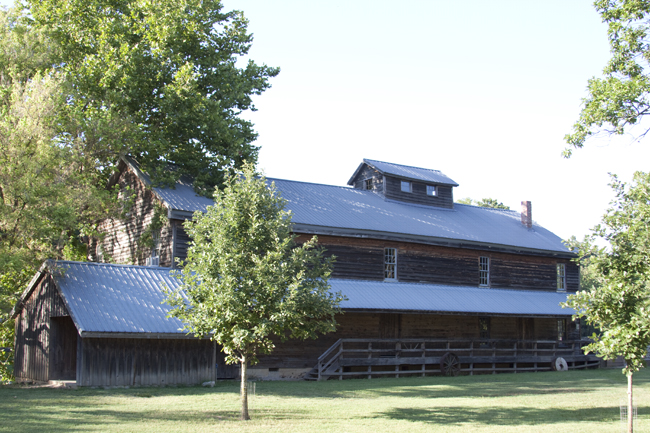
Enter the Frisco Railroad, which laid tracks too far from the mill for the mill to use it for business purposes. By the mid-1870s, Jollification had been reduced to the name Jolly. George Isbell – who had once again started the business of whiskey distilling, along with grain grinding – gave up the distillery side of the business. George Isbell enlarged the mill and in 1894, sold it to George I. Brown, his nephew. Brown, according to Suggs, further enlarged the mill and brought in an underwater turbine to use instead of the standard undershot wheel. By this time, the mill became known as Jolly Mill.
History is sketchy about the mill until about 1912, when it’s reported (again by Suggs) that A.C. Lucas and Son owned the mill, called Jolly Rolling Mills. W. F. Haskins then purchased it and added a second turbine. Suggs adds that production declined after WW1, and ended in 1973.
Jolly Mill Park Foundation
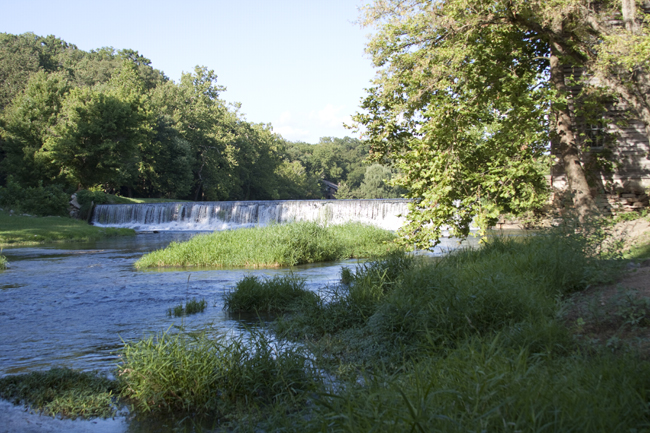
Local citizens created the Jolly Mill Park Foundation in 1983, for the purpose of restoring the old mill and to add a local recreation area. They saw success, and the mill became another listing on the National Register of Historic Places. Picnic areas and fishing opportunities appear abundant. On the day I visited, a mom and her 2 kids walked up to the parking lot from fishing downstream. The Missouri Department of Conservation stocks 4 miles of the associated stream at this location with rainbow and brown trout. It’s considered a “White Ribbon Trout Area.”
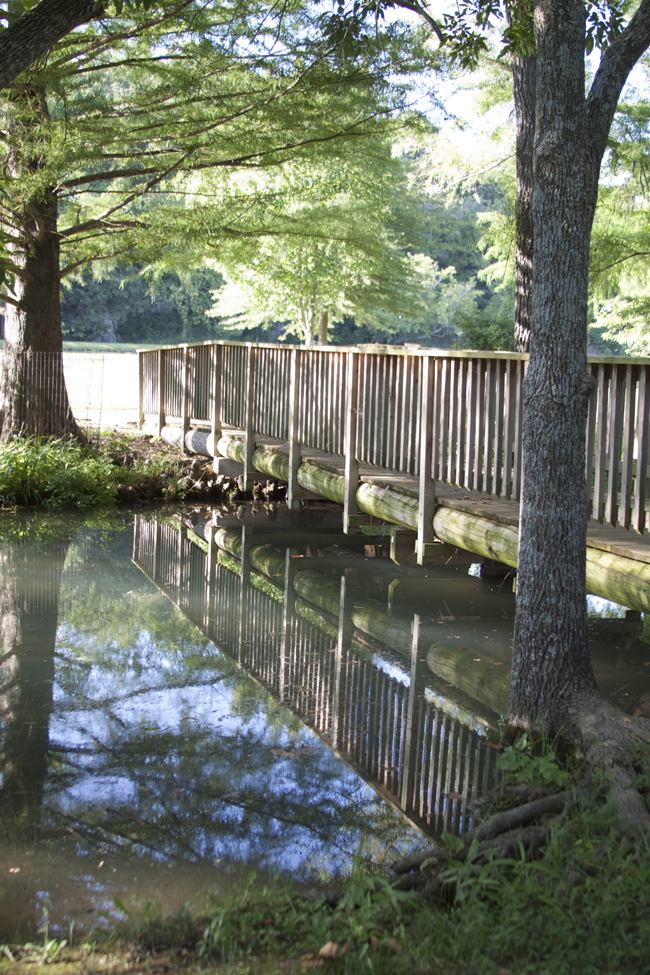
Everything seemed to be running well after the restoration, with grist mill demonstrations onsite … until the flood of December 2015, which decimated the park’s covered bridge and filled the mill full of mud. The next spring, the Foundation held its first Annual Jolly Mill Challenge, a fun run and 5k race. At least 227 runners showed up, and ponied up enough money to restore the bridge, parking lot, sidewalks and other features of the park.
Chapman School
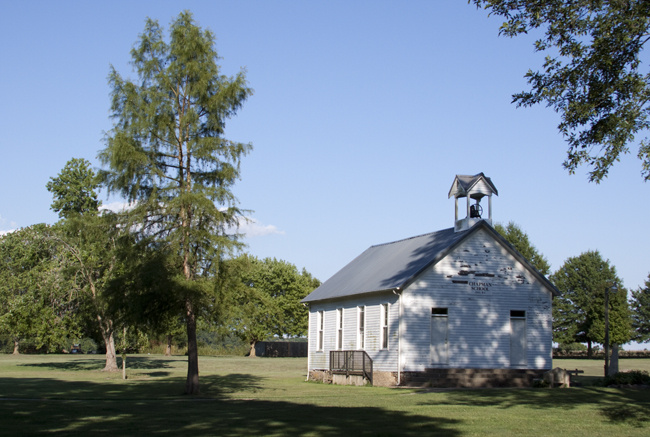
The park also contains the Chapman School, aka Hazel Hill School. Built in 1884, this school claims the title of the first public school in Barry Country School District No. 1. It closed the doors to education in the spring of 1951. The J.H. Chapman family donated the school to the Jolly Mill Park Foundation in 1985. The Foundation moved the school from its site – 1.5 miles away – to the park and restored it. It sits next to a modern playground, a juxtaposition between the old and the new.
Visit Jolly Mill on Facebook.
Jolly Mill is located at 11262 Jolly Mill Ln, Pierce City, Missouri.

